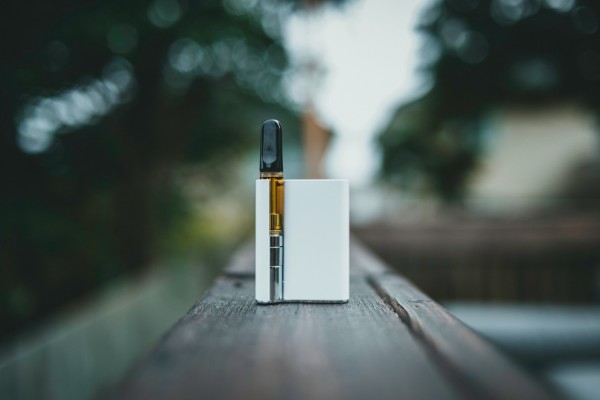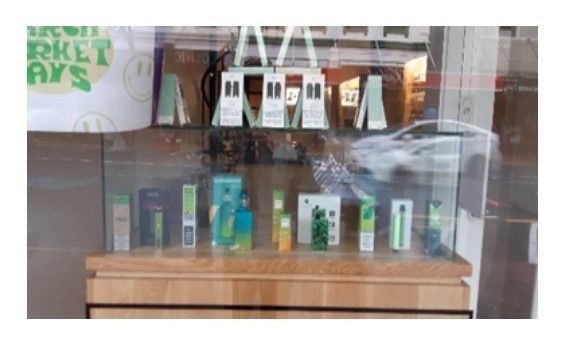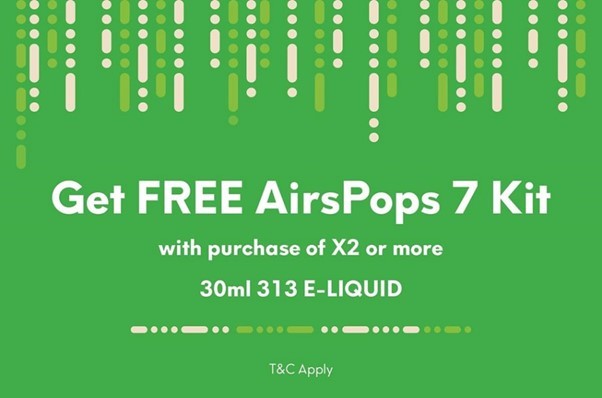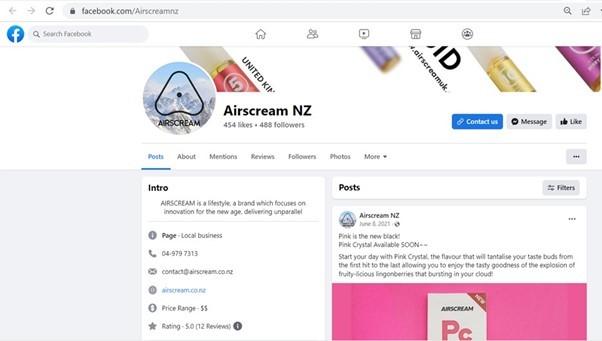As part of the consultation process to denicotinise cigarettes and reduce the number of stores selling tobacco, Associate Minister of Health Dr Ayesha Verrall has outlined proposals to strengthen vaping product regulation. Noting that: “youth vaping rates are too high and we need to strike a better balance”, she has requested feedback on three additional measures: proximity restrictions for specialist vape retailers, disallowing evocative flavour names, and introducing new requirements for disposable vapes, including a reduction in the maximum nicotine concentration permitted. These proposals will help protect young people from aggressive vape marketing, but do they go far enough? In this blog, we explore additional measures that could more comprehensively regulate vaping product design and packaging, pricing, availability and promotion.
We welcome the Government’s recognition that existing measures have not constrained rapidly rising youth vaping rates; the latest NZ Health Survey found daily vaping among 18 to 24 year olds had risen to 23% while current (at least monthly) vaping among this age group was 28% (data on vaping among 15 to 17 year olds was not reported). Among Y10 students (aged 14 to 15) daily vaping was 10% overall in 2022, but higher among Māori (22%) and Māori girls (25%). These data illustrate the importance of finding “a better balance” between supporting people who smoke to move to less harmful options, while protecting young people who have never smoked from vaping uptake.
However, will the three measures outlined go far enough to safeguard young people’s right to protection from highly addictive products?1 To address this question, we first explore the strategies vape marketers have used to target young people, before considering the proposed new measures and suggesting additional steps we believe are needed to bring rapid reductions in youth vaping prevalence.
Vape product marketing
Marketers develop strategies that address four domains, known colloquially as the “4Ps”;2 these include place (or availability); product design; promotion, and price. Distribution networks play a crucial role in fostering product trial and supporting on-going use; nearly 100 years ago, then Coca Cola chairman Robert Woodruff sought to bring his brand “within arm’s reach of desire”, knowing that easy availability would help Coca Cola become an internationally recognised lifestyle brand. NZ’s legislation, which allows vaping products to be sold as consumer items in non-specialist outlets such as dairies, service stations and supermarkets,3 has enabled wide distribution networks to evolve, thus ensuring vaping products are as ubiquitous as milk and other household essentials. Both generic and specialist vape store numbers have risen rapidly; for example, BAT’s Vuse website states the brand is available at more than 2500 outlets. Furthermore, many dairies have created spaces within or adjacent to their store; the current regulations allow these spaces to be registered as R18 specialist vape ‘stores’, which may sell a full flavour range.4 Dairies are often visited by young people, whose potentially high exposure and access to vaping products,5 may have helped normalise vaping as a common lifestyle practice within this age group.
Vaping products have evolved through several design phases that illustrate the shift from a market comprising people who smoke (targeted by a “cigalike” product, a visual analogue of a smoked cigarette)6 to a much broader market, including people who do not smoke, particularly young people. Products targeting this latter group include “pods”, aesthetically appealing and discreet devices reminiscent of the visually alluring imagery used to transform tobacco brands into “badge” products that communicated desirable attributes about users and appealed particularly to young people.7 Alongside changes in device design, the development of nicotine salts has enabled e-liquids to deliver higher nicotine concentrations without loss of palatability,8 thus increasing the addictiveness of vaping and the speed at which young people become addicted to nicotine.
Prior to the 2020 legislation, promotions directly targeted young people via influencers, event marketing, and lifestyle appeals.9 Post-legislation, promotions have continued as marketers make sophisticated use of social media to create personally targeted appeals, encourage user-content, and facilitate referrals among users’ social networks.10 Pricing strategies have enabled wide uptake of vaping products; many disposable vapes retail for less than $10, and are thus highly affordable, particularly to young people.
Collectively, these marketing strategies have expanded vaping’s market. No longer only an option offering a reduced harm alternative to adults unable to quit smoking using approved cessation treatments, vaping has become a lifestyle practice concentrated among young people and often unconnected to smoking status. The Government hopes to achieve a new “balance” that focuses on vaping’s role as a reduced harm alternative to smoking; however, it is not clear the three measures proposed will afford the protection young people deserve. We now explore those measures and outline additional policies that could help reduce vaping prevalence among young people.
Proposed place-related measures
The Government’s proposals suggest applying proximity restrictions to new specialist vape retailer applications by considering the store’s “location relative to the distance from schools and sports grounds or other considerations specific to certain communities”. Importantly, this step will help prevent growth of the “store-within-a-store” tactic practised by some dairies, if these are located near schools;4 however, it will not eliminate this practice. Nor will it require dairies to remove existing specialist vape stores developed within their store or reduce the many hundreds of generic vape stores already operating near schools.
More importantly, the measure addresses only proximity; it does not consider the wider problem of retailer density that in 2022 led Local Government NZ members to pass a remit calling for a reduction in vape store numbers. As well as considering the growth of specialist vape retailers, the Government needs to consider total vape store numbers and introduce measures that ensure vape products are no longer “within arm’s reach of desire”.
We suggest ending sales of vaping products in generic stores and restricting these products to stand-alone R18 specialist stores, where staff are more likely to be able to assist people who smoke and wish to switch to vaping. Removing vaping products from dairies, supermarkets and service stations would achieve several important benefits. First, this step would recognise vaping products are not low-involvement, low-risk consumer products, and acknowledge that purchasers need advice to identify an appropriate device, flavour(s), nicotine level(s), and practices to successfully transition from smoking to vaping.11 12 Research with dairy owners found they knew little about the products sold and sometimes gave incorrect advice.13 Given earlier work found few adults who smoke reported purchasing vaping products from dairies, removing these products from generic outlets may have little effect on how people who smoke access vapes or e-liquids. Second, this step would make vaping products less visible to young people, who often frequent dairies and are exposed to vaping power-walls or inadequately demarcated ‘stores within a store’; it would thus end the implicit framing of vaping products as everyday products. Third, this measure would encourage people who smoke to visit R18 specialist vape stores, where staff are typically more knowledgeable about the products sold. To enhance retailers’ knowledge, new regulations could also require all specialist retailers to have basic training in smoking cessation methods and knowledge of referral pathways (e.g., Stop Smoking Services or the Quitline).
Although reducing overall store numbers is crucial to controlling young people’s access to vaping products, the consultation document notes that restricting generic retail outlet numbers will require a legislative amendment. Omissions from the initial vaping Act and the most recent Act have limited the Government’s ability to manage overall store numbers. We strongly recommend on-going evaluation to assess how effectively the proposed measures reduce youth vaping. If levels do not decline or remain disproportionately high among some population groups, we urge the Government to introduce legislation that provides greater control over total vape store numbers.
Proposed product design measures
The Minister has proposed two product design restrictions: the first will limit vaping flavour names and thus end the egregious practice of labelling e-liquids flavours with names such as ‘unicorn milk’ and ‘gummy bear’. While important, this measure needs to be accompanied by plain packaging that removes the colourful designs that are also likely to appeal to young people, thus closing the loophole allowing marketers to recreate flavour connotations using on-pack imagery. Plain packaging in this context would be simple black and white packaging, not dissuasive packaging, which would remain reserved for combusted tobacco products.
The second product design measure would apply to single-use vaping products, also known as disposables (or ‘dispos’), and require these to have removable batteries, child safety mechanisms and container labelling. The Minister also proposes reducing the nicotine salts concentration to 35mg/ml, though the rationale for this reduction is not clear and the proposed level is higher than other jurisdictions, such as the 20mg/ml permitted in the EU. We support limiting nicotine concentration levels but believe the level set should be based on evidence that it is likely to be significantly less addictive to young people. This question also requires careful monitoring to ensure an appropriate balance between protecting young people while retaining a viable alternative for people wishing to transition from smoking to vaping.
Requiring removable batteries would eliminate many disposable vapes currently sold and potentially see the most inexpensive product options removed from the market. However, given the Minister noted that “86% of 14-17 years old from New South Wales had tried disposable vapes”, it is not clear why she did not disallow these products completely. Because people who smoke will need vaping devices that operate for weeks or months, disposable vapes that last for only days may be less useful in supporting a transition from smoking. As the Minister noted, disposables are an “easy gateway product to vaping” among young people; removing these products from the market would thus protect young people yet would be unlikely to deter switching among people who smoke.
Additional product restrictions could include removing lower content products (e.g., products containing 6ml or less e-liquid) from the market as these are the least expensive products (and thus appeal to young people while offering lower utility to people who smoke). This measure would parallel the decision to end sales of cigarettes in packs containing fewer than 20 sticks, which reduced the affordability of tobacco to young people.
Potential promotion measures
The proposed changes do not include measures to manage promotions occurring via social media10 or within stores. At present, all stores may feature vaping product displays and vaping power-walls have replaced the smoking power-walls associated with youth smoking experimentation.14 Young people walking within a CBD are exposed to alluring window displays that function as product advertisements.
Social media promotions include free offers, lifestyle marketing that positions vaping as a social connector, and competitions (see Figures below), all visible to anyone willing to click the link indicating they are aged over 18 years:
We suggest the Government disallow in-store promotions such as point-of-sale displays in generic retail outlets (if these are permitted to continue selling vaping products), require that vaping products are not visible from the street, introduce and enforce robust age verification procedures for online and in-person sales, disallow sales promotions (e.g. ‘buy one get one free’ and referral promotions), and apply pre-vetting procedures to social media promotions to ensure these comply with the new regulations.15
Potential pricing measures
The proposals do not include measures to introduce minimum prices or an excise tax on vaping products shown to differentially appeal to young people. While it is important not to create barriers that could deter people who smoke from switching to vaping, the Government should consider minimum prices if youth vaping does not decline rapidly.
Monitoring and enforcement
We urge the Government to monitor the impact these new policies have on youth vaping prevalence. Detailed monitoring will require relevant surveillance information, including studies examining reasons why people use vaping products, their perceptions of these, usage practices (e.g., devices and flavours used), and sources. Given rapid rises in youth vaping prevalence, we strongly recommend that the Government set a date by which they will have evaluated and reported on these (and other) measures designed to reduce youth vaping. Evidence of underage sales and findings that more than 50% of young people reported buying vaping products from dairies indicate funding is needed to resource enforcement officers who can monitor compliance and undertake more frequent store surveillance operations. Stronger penalties for stores found to have sold to minors are also required; these could include restrictions on offenders’ ability to sell vaping products, including the possibility of long-term bans on selling for recidivist offenders. In tight financial times we recognise the challenge of allocating more funding and note that removing vaping products from generic stores would greatly reduce store numbers, thus enabling more detailed and cost-effective store surveillance.
In summary, we applaud the Minister’s recognition of youth vaping as a serious problem requiring urgent attention and her determination to find a “better balance” that protects young people from vaping uptake, and hope others will share their thoughts on where this balance should sit. We believe stronger measures are needed to control marketing strategies used to target vaping products at young people and call on the Government to implement more comprehensive proposals, including remedying omissions in earlier legislation. We encourage Minister Verrall to take a comprehensive rather than piecemeal approach; our rangatahi deserve no less.
* All authors are members of the Department of Public Health and ASPIRE Centre, University of Otago, Wellington. Contact author: Janet Hoek (janet.hoek@otago.ac.nz).
This post was originally published on the Public Health Expert Blog





